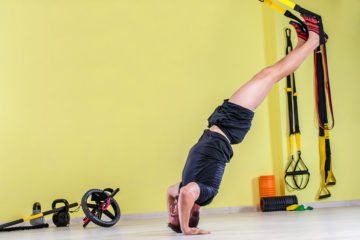Body Building for Beginners: Tips for Training Lagging Muscles

By Alexa Rose
Weak or ‘lagging’ muscles are a common problem for many bodybuilders and frequent exercisers. Many people have areas on their body they feel do not show the same rate of muscle growth, even though they work at them just as hard. There can be many reasons why certain muscles do not make the same gains as others. Some believe the problem is not physical, but rather neural, and that it can be overcome by a ‘mind over matter’ approach. The truth is a little more complicated than that. The biggest limiting factor is always going to be your genetics; however hard or often you train, your muscles are never going to get any bigger than your genetic makeup allows for. However, there are things you can do at every stage of your workout to help those stubborn muscles grow as much as possible. This is where a technique called specialization comes in, targeting specific muscles and introducing new exercises to stress your muscles in a variety of ways, leading to increased muscle growth.
Start by sitting down and having an honest look at your strengths and weaknesses. Consider hiring a personal trainer for at least a few sessions. They will easily be able to help you identify weaker areas and set out a plan to overcome them. If that isn’t an option for you, try examining your body closely in a mirror.
Do your research, and don’t forget the basics! Too many people train year after year, failing to reach their true hypertrophic potential because of fundamental flaws in their program, such as not using enough weight, or incorrect nutrition.
Once you have identified any problem areas, make sure you prioritize them during your workout. Work them first every time while your concentration is at its highest and your body is fresh. Slight variations in your workout can also make a huge difference by hitting the muscle from a different angle – try varying your stance, grip, intensity, and rest periods, which can all help stimulate muscle growth.
Train the stubborn muscle group twice a week – once with a full workout and one at half strength. It is vital that you take at least 2 rest days between training weak muscle groups to allow adequate time for them to repair and grow.
On the days that you are due to train a lagging muscle increase your carbohydrate intake, ideally by 25-50 grams in your pre- and post-workout meal. These extra nutrients will not only help you train harder, they will also aid in your recovery.
A common problem you may find with a lagging muscle is that stronger muscles around it overcompensate for the weakness, further exacerbating the problem. So although it may sound strange, instead of hammering a weak muscle with more weights/reps every chance you get, you may need to actually do less of a certain exercise which is contributing to the problem. Instead of always considering which factors to strengthen a weak area, instead consider what exercises you could take away to give the muscle the best possible chance to increase in size.
Training with a partner can be effective when training to bring up a lagging muscle — they can ‘spot’ you, meaning you are able to lift heavier weights with more confidence, and also provide a boost with verbal stimulation and motivation.
Train the stubborn muscle to failure. This simply means you cannot complete another rep using the correct form. Many bodybuilders choose to train this way, pushing each set until they cannot complete any more — the reason for this is the intensity that is created. The key to training to failure is to always use the correct form — the risks of injury this way are minimal, while the gains you make are maximized; your muscles will respond incredibly well, increasing in size and strength. You need to push yourself until it is simply not possible to complete another rep in strict for m — if you aren’t doing this, you will never see the best possible results. However, this means listening to your body and knowing when to stop; t raining to failure means pushing your body to its personal limit and then resting . Then, once you have completed your rest time (usually between 2-6 minutes), your body will then be ready to complete the sets to failure again.
Stay focused throughout your workout — use the mind/muscle connection to your advantage. You need to visualise the muscle in your mind and concentrate as much as you can on the execution and the form of your movement. Ensure you are just as mentally focused at the end of your workout, as you are at the beginning.
Your body repairs and grows when you sleep — so it’s a really good idea to get some extra sleep the night before and after you train a weak muscle group. This gives your body more time to heal, leading to more efficient muscle growth.
Hopefully the tips contained within this article will have helped you to identify any weak areas on your body and given you some ideas of how to overcome them. Remember, everyone is different and you may need to experiment with different ways of doing things to find the methods that work for you. The most important tip to remember when dealing with a lagging muscle is to stay patient! The best progress in bodybuilding is always measured in months and years, not weeks.







No Comment